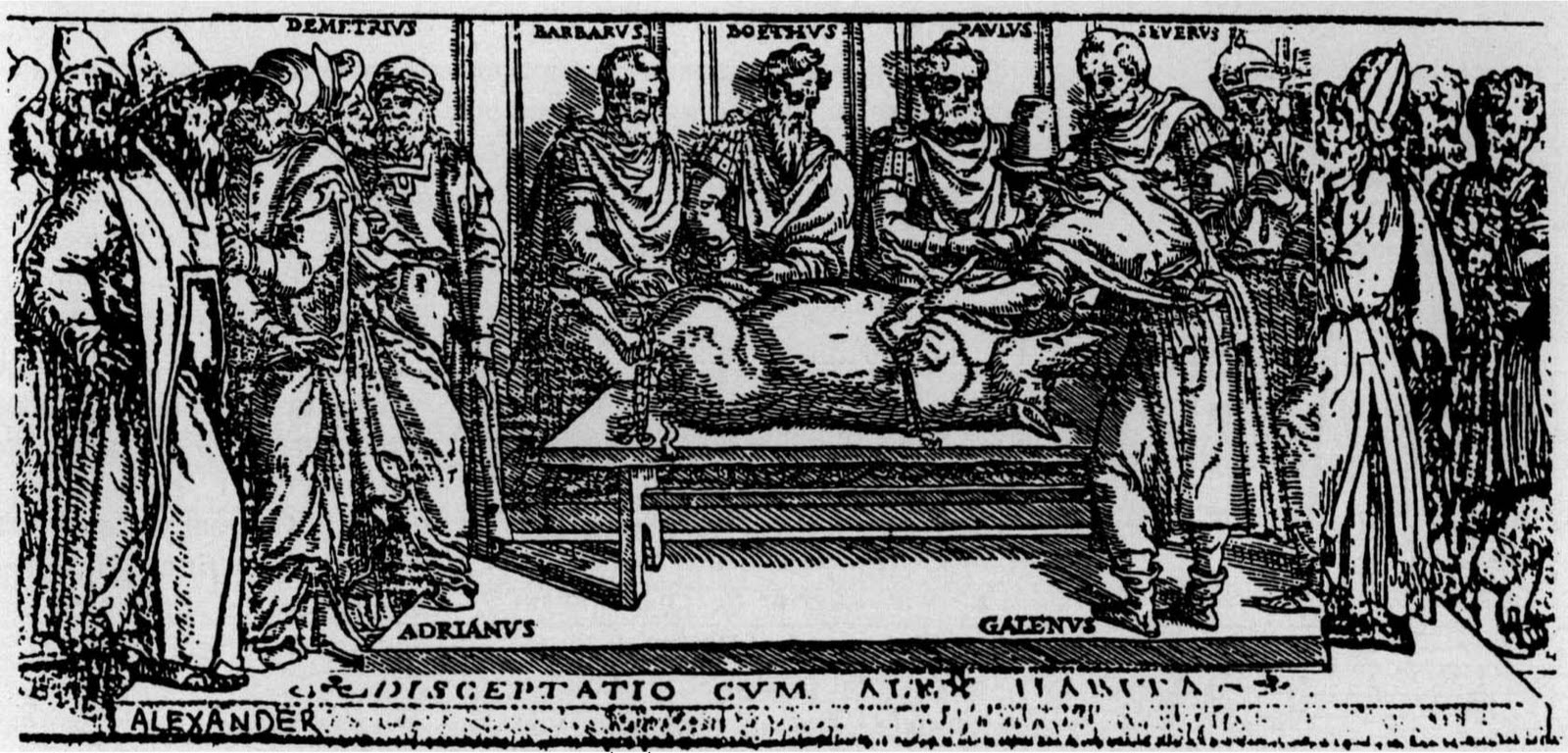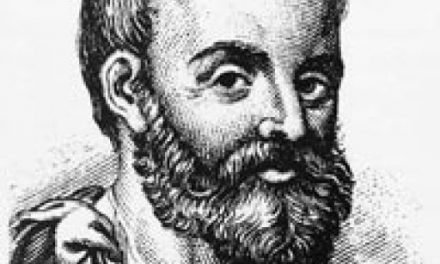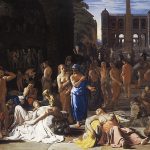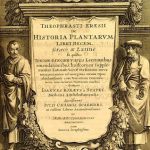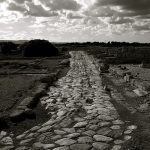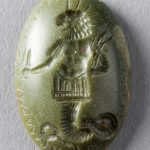This post is about a late Renaissance physician, Guillaume de Baillou (1538-1616), with a complex relationship with the great ancient doctors (Galen and Hippocrates, among others). I haven’t worked on his works for a little while now, so it feels odd to write a blog post about him just now, but I think scholars would benefit from looking more closely at his works, especially since they became available online on the BIU-Santé (formerly ‘BIUM’) website.
An acclaimed professor of medicine in Paris in his lifetime, Guillaume de Baillou (lat. Ballonius) has since had a mixed fortune. On the one hand, he is often referred to as the ‘French Hippocrates’ (in fact, many other French physicians have received this title from historians!) in dictionaries and encyclopaedias, alongside the likes of Duret and Fernel; on the other hand, scholarly studies on Baillou are extremely rare. A seminal paper on ‘the Paris Hippocratics’ by Ian Lonie in 1985 (reference below) analysed the group of Parisian professors of medicine that led research and teaching at the Faculté de Médecine in the late Renaissance. Their influence over the medical community was based upon their teaching as well as (if not more than) their publications. Experts in Hippocratic and Galenic literature, they devoted much of their time to commentaries, usually aimed at students. But they were also keen readers of contemporary medical works, and engaged with the medical controversies of the time. Among those remarkable French physicians was Guillaume de Baillou, who singled himself out by his style, inspired (so said Lonie) by that of the great Hippocrates himself.
His many works were in fact published long after his death – but retained an interest for physicians well into the 19th c.: two editions of his complete works were published in the 18th c. (1734-36 and 1762), and his idiosyncratic ‘Epidémies et ephémérides’ in two books were translated into French by Prosper Yvaren (a physician, too) in 1858. Baillou’s works cover various aspects of medicine (clinical observation being key in his methodological approach), and dip into various well-established genres of early modern medical writing: he wrote a commentary on Theophrastus’ De vertigine, a book of ‘medical definitions’, two books of ‘consilia’… Not all his works made their way to publication, and some are known to us only through a list of manuscripts once left in the hands of his nephews, Thévart and Le Letier. But among those books that have survived in print, most convey a sense of accute philological tuning, combined with an extremely attentive description of signs and symptoms of disease. This may sound surprising to some – as 16th c. physicians are often described as ‘medical philologists’, but it is in fact no coincidence that philology and observation should combine so well in Baillou’s works. Heterogeneity in Baillou’s corpus is only apparent, for his philological endeavours illuminate his longing for complete, accurate clinical observation: Baillou’s book of ‘medical definitions’, for example, explores a number of ‘medical’ terms as used by ancient and modern physicians. Baillou, here, limits himself to writing about the terms that were left out of Jean de Gorris (Gorrhaeus)’ own Medical definitions (1563). In this short book, he is therefore providing a useful tool for students of medicine, aimed at filling a gap in contemporary scholarship. His enquiries on the signification of medical terms, in that book as well as in the rest of his works, draws attention to both problems of interpretation of ancient medical texts, and to medical experience of patients’ symptoms. Accurate linguistic understanding goes hand in hand with correct, comprehensive clinical observation; literal comprehension of Hippocratic texts (for example about siriasis, speech impairment, or deceptively common adjectives such as ‘dry’, xèros) is the key towards efficient gathering of medical evidence. Baillou’s emulation of Hippocrates (especially in the fascinating Epidémies et Ephémérides) thus has less than nothing to do with sterile imitation – it is a quest for medical improvement and a better understanding of patients’ bodies and their reaction to treatment. Baillou uses both his personal bedside observations and reading of Hippocrates to reflect on medical knowledge: his Epidémies et ephémérides, written in Paris over several years in the 1570s, testify best to this approach. Wherever possible, Baillou tests his own knowledge by confronting the physical signs he observes in patients and the data, descriptions, definitions and analyses found in books, ancient and modern. This way, he sometimes ends up questioning the validity of certain long-established nosological categories; he adds subtle distinctions in the description of symptoms. Those qualities, which belong to a real clinician, allow him not only to discuss the available evidence, but to refine clinical knowledge. In this respect, he ressembles Galen, who advocated a non-dogmatic approach to medical practice, based on wide learning and experience, and acute attention to all available signs.
At a time when the plague was still lurking around (killing about 30,000 people in Paris in 1580), and previously unknown, incurable diseases such as syphilis (in which Baillou took an interest, judging from his many annotations to Le Paulmier’s monograph on the topic) often found physicians helpless, Baillou’s clinical skills were precious, and his continuous search for knowledge commanded (and still commands) respect. While it is commonplace to underline his contribution to the understanding of several pathologies, such as arthritis, historians would now be well-advised to read more thoroughly his complete works. A unique testimony of a Parisian doctor at the turn of the 16th and the 17th centuries, Baillou’s works provide an insight into the medical and biological aspects of Paris at the end of the Renaissance, in the midst of troubled times. They are also a mine of information about the way ancient texts were read, understood, used and discussed. Finally, they formed one of the essential sources of inspiration for early modern medicine, especially environmental medicine.
*Further reading: *
In the following, I list recent contributions on Baillou, to be found (a) on the BIU-Santé website (introduction by prof. Joël Coste, EPHE, Paris; digitised texts) and (b) in a recent issue of Medicina e Storia dedicated to Baillou and convened by the same Joël Coste. My own contribution in that volume is about Hellenism in Baillou’s style and thought, but I thoroughly recommend reading the other papers, especially Coste’s medical-historical approach on Baillou’s Epidémies, and Nutton’s analysis of Baillou’s annotations in a book on syphilis.
Naturally, I also added the reference to Ian M. Lonie’s inspiring article.
Link to Joël Coste’s presentation of Guillaume de Baillou and his works:
http://www.biusante.parisdescartes.fr/histmed/medica/baillou.htm
Link to Medicina e Storia’s issue on Baillou (2011) for titles and abstracts of papers:
http://www.fupress.net/index.php/mes/issue/current
Download my own paper on Baillou here: http://www.carolinepetit.net/?page_id=86
Additional reading:
I. Lonie, “The “Paris Hippocratics”: teaching and research in Paris in the second half of the sixteenth century”, In A. Wear, R. French, I.M. Lonie (Eds.) The medical Renaissance of the Sixteenth Century, Cambridge, Cambridge University Press, 1985, p. 155-174.
Joël Coste provides additional literature in the above-mentioned introduction to Guillaume de Baillou’s works.
